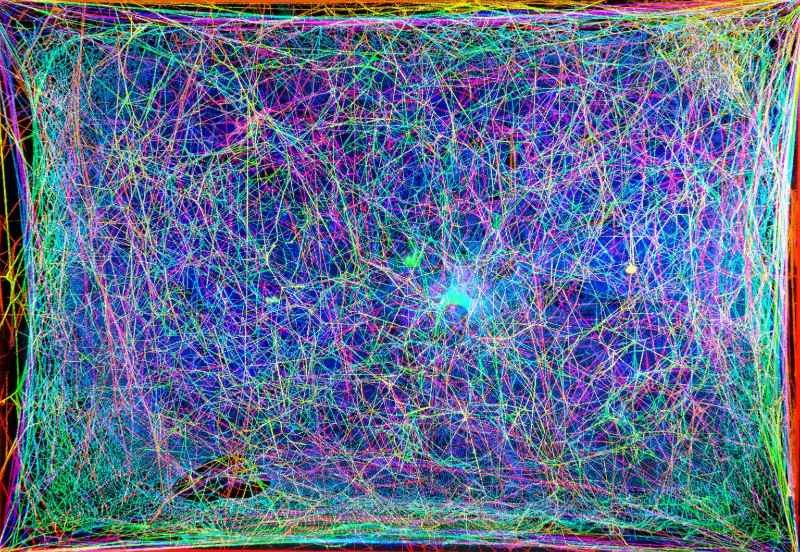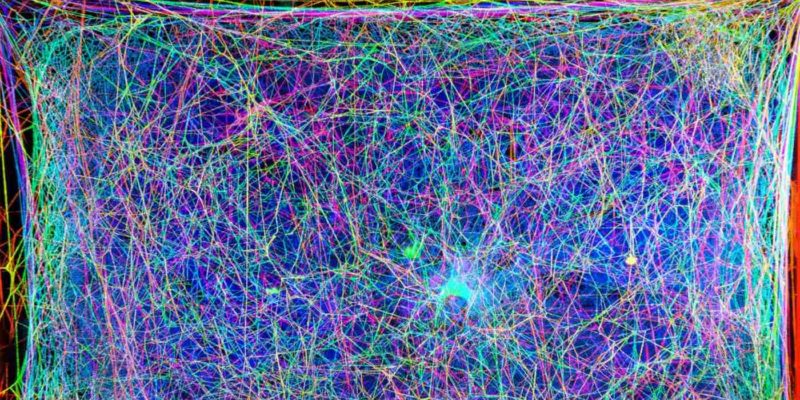MIT Scientists Spin Some Music Out of Spider Webs – And it Sounds Otherworldly (Listen)

Spiders are master builders, expertly weaving strands of silk into intricate 3D webs that serve as the spiders’ home and hunting ground.
If humans could enter the world of spiders, they could learn about web building, arachnid behavior, and more.
Yesterday, scientists reported that they have translated the structure of a web into music, which could have applications ranging from better 3D printers to interspecies communication and otherworldly musical compositions.
“The spider lives in a vibrating string environment,” says Markus Buehler, Ph.D. at MIT, the principal investigator of the project, presenting the work. “They don’t see very well, so they feel their world through vibrations, which have different frequencies.” Such vibrations occur, for example, when the spider stretches a strand of silk during construction, or when the wind or a trapped fly moves the web.
Buehler, who has long been interested in music, wondered if he could extract nonhuman rhythms and melodies from natural materials, such as spider webs. “Webs could be a new source of musical inspiration that is very different from the usual human experience,” he says.
Additionally, by experiencing a web through hearing and vision, Buehler and his colleagues at the Massachusetts Institute of Technology (MIT), along with collaborator Tomás Saraceno at Studio Tomás Saraceno, hoped to gain new insights into 3D architecture and construction of webs. .
With these goals in mind, the researchers scanned a natural cobweb with a laser to capture 2D cross-sections and then used computer algorithms to reconstruct the 3D network of the web.
MORE: Top 10 species discovered in 2020 include a Harry Potter snake and desert-dwelling broccoli
The team assigned different sound frequencies to the web threads, creating “notes” that they combined in patterns based on the web’s 3D structure to generate melodies. The researchers then created a harp-like instrument and played the cobweb music in various live performances around the world.
The team also made a virtual reality setup that allowed people to visually and audibly “log in” to the web. “The virtual reality environment is really intriguing because your ears are going to detect structural features that you can see but not immediately recognize,” says Buehler. “By hearing it and seeing it at the same time, you can really start to understand the environment the spider lives in.”
To gain insight into how spiders build webs, the researchers scanned a web during the construction process, transforming each stage into music with different sounds. “The sounds of our harp-like instrument change during the process, reflecting the way the spider builds the web,” says Buehler.
“So we can explore the time sequence of how the web is built audibly.” This step-by-step knowledge of how a spider builds a web could help design 3D printers that “mimic spiders” that build complex microelectronics. “The spider’s way of ‘printing’ the web is remarkable because no support material is used, as is often needed in current 3D printing methods,” he says.
In other experiments, the researchers explored how the sound of a net changes when exposed to different mechanical forces, such as stretching. “In the virtual reality environment, we can start to separate the web, and when we do so, the tension of the strings and the sound they produce changes. At some point, the strands break and click, ”says Buehler.
RELATED: Giant xylophone in a Japanese forest uses gravity to play the most ethereal Bach music
The team is also interested in learning how to communicate with spiders in their own language. They recorded the web vibrations produced when the spiders performed different activities, such as building a web, communicating with other spiders, or sending courtship signals.
Although the frequencies sounded similar to the human ear, a machine learning algorithm correctly classified the sounds in the different activities. “Now we are trying to generate synthetic signals to basically speak the language of the spider,” says Buehler. “If we expose them to certain patterns of rhythms or vibrations, can we affect what they do and can we begin to communicate with them? Those are really exciting ideas. “
(HEAR to the cobweb music below.)
Source: American Chemical Society
SPIN Good news for your friends – share this story …








